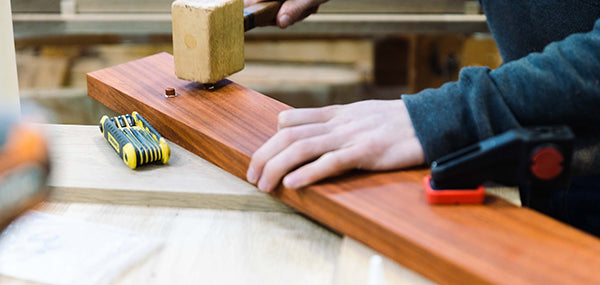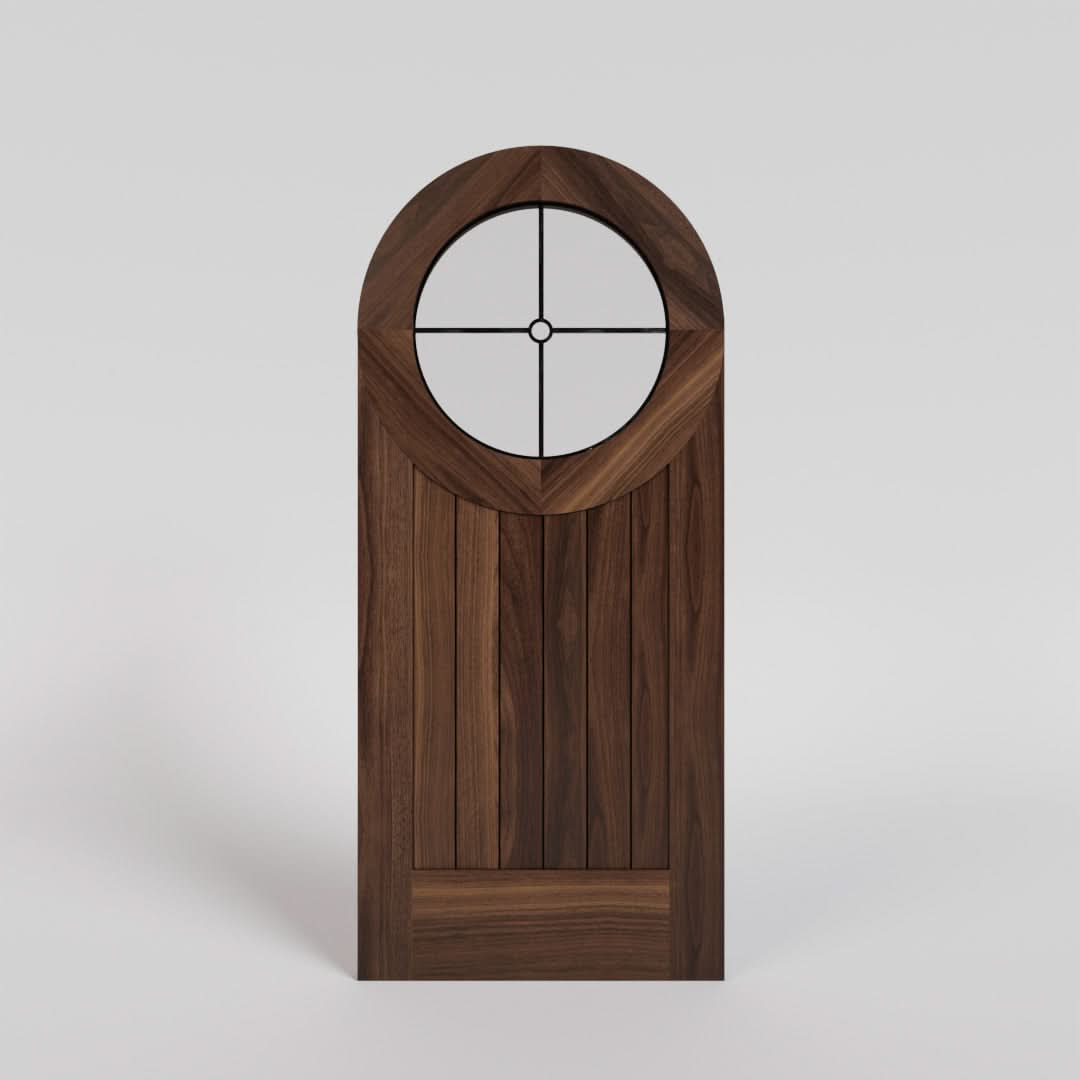We’re all about keeping it real, and that includes home decor and fragrances.
Using natural materials—plants, herbs, fruits, and spices—is a welcome antidote to artificial fragrances. Artificial fragrances can be cloying or overpowering, as well as irritating to those with sensitive noses.
The use of real materials also lends an authentic look to your space. Since most of these fragrant crafts double as decor, they're multi-purpose, so you save time on decorating. In a time where disposable, trendy decor is cycled through each year, this approach to seasonal decorating is not only sustainable—it'll help you stand out.
Pomanders
Pomanders are oranges studded with whole cloves. They’re kind of the OG air freshener, dating back to the Middle Ages. You can create your own designs with the cloves, and it’s a fun activity for little ones, too—just make sure they wash their hands after handling the cloves. (Have them draw out their initials with the cloves or make other fun shapes!)
Once your clove designs are completed, hang the pomanders from your mantel, or stash in drawers to keep your linens fresh and free of moths.

Cinnamon ornaments
With cinnamon dough, you can create ornaments in any shape you want. Birds like robins are a popular choice, but you can use any holiday-themed cookie cutters you have on hand, like gingerbread men, candy canes, or snowflakes. When you put these ornaments on your tree, they’ll fill the room with the sweet scent of cinnamon.
Here’s what you need to make cinnamon dough.
1 cup of ground cinnamon (for more complexity, you can add other warming spices, like ground nutmeg, cardamom, or allspice)
¼ cup of applesauce
½ cup liquid craft glue (such as Elmers)
Steps
- Mix the cinnamon and applesauce together in a bowl until fully combined, then add the craft glue and mix well. Once the dough is mixed, let it stand for an hour before rolling out with a rolling pin to roughly ¼" thick.
- You can use cookie cutters or an Exacto-knife and paper stencil to create your shapes. Of course, the Exacto-knife isn’t a suitable method if you’re doing this with small children.
- Dry out the cinnamon dough creations on a cookie sheet in a low oven (175-200 degrees Fahrenheit) for approximately 2 hours, flipping once.
- Once completely dry, you can apply more craft glue and sprinkle your ornaments with glitter, beads, or (if you’re really feeling au naturel) a dried herb like lavender.
Stovetop simmer pots
Simmer pots are ideal for adding fragrance to your home. You simply simmer herbs, spices, and fruits in water over low heat for at least 1-2 hours. Candles are beautiful, and incense is powerful, but they aren’t always practical ways to scent your house. Whether you’ve got curious kids, a cat that can’t be trusted, or someone with asthma who’s sensitive to smoke. The aromatic steam generated from simmering herbs, spices, and plants makes your house smell good—smoke-free.
Clean and Energizing: Rosemary and Bay
This all-purpose simmer pot feels like pushing a reset button on the energy of your space. Add 2-3 bay leaves and 4-5 springs of rosemary to a large pot of water. Simmer on low heat. The water will turn deep red. Tell your kids it’s a magical potion. This scent combination is also useful if you need to get a strong food smell—like fish, onions, or fried food—out of the house.
Tranquil and Soothing: Cedar, Juniper, and Australian Sandalwood
If you want to bring the tranquil stillness of an evergreen forest into your home, this is the combination. Use 2-3 springs of juniper and cedar, including the buds of the cedar, if you can find them. Sandalwood is readily available online—add one stick of it to the pot.
(Bonus: you can strain solids out of what’s left of this simmer pot water and save it to use as a fragrant floor wash. Just allow it to cool, and combine with Murphy’s wood soap, castille soap, or any other mild soap suitable for your flooring.)
Festive and Spicy: Cinnamon, Star Anise, Clove, Oranges, Cranberries
Combine 2 cinnamon sticks, one star anize pod, 6 cloves, one sliced orange, and a handful of cranberries into a pot of water. Add any other warming spices you have on hand, like allspice, nutmeg, cardamom, or ginger. This combination creates the ultimate “merry and bright” mood for the holidays.
Luxurious and Fragrant: Clary Sage and Jasmine
Dried jasmine flowers are available from health food stores and online. Combine 1-2 handfuls of the dried flowers with 3-4 springs of fresh sage, and you’ll have a powerfully aromatic fragrance. Reserve this simmer pot recipe for someone you really want to charm, or just before an elegant dinner party.
Hanging Herb and Greenery Bundles
Making greenery swag bundles studded with other fragrant materials adds a traditional, folksy touch to your seasonal decor. They’re easier than garlands or wreaths and a fun activity for little ones. Simply bundle together bunches of greenery and herbs with natural twine or a festive ribbon (grosgrain is ideal, satin is too slippery).
Dried citrus slices add a punch of bright color to these herb bundles. To make dehyrated citrus slices, slice the fruit into ¼ to 3/8” pieces with a sharp knife or mandoline. Set on a wire rack on a cookie sheet in the lowest temperature setting on your oven (usually 175-200 degrees F). Bake, turning the slices every half hour, for 4-6 hours.
Here are our favorite combinations:
- Cedar and orange
- Spruce and lemon
- Fir and eucalyptus
- Juniper and sage
- Rosemary and lavender
Garlands

Garlands go back to pre-Christian traditions around the winter festival of Jule, and even the Roman festival Saturnalia. Garlands made of evergreens symbolized endurance and persistence—when the rest of the leaves and plants have died, evergreen trees stay vibrant. Bringing evergreens into the home added comfort and cheer to a traditionally dark, difficult time of year. Evergreen garlands create texture and coziness—but when done well, they are a tasteful alternative to plastic or store-bought decorations. Garlands look beautiful on fireplace mantels and hung over doorways.
Types of foliage for garlands
Cedar: Both Western Red Cedar and Eastern White Cedar look great in garlands or wreaths. You will know them by their scaled leaves that look like braids, as opposed to other conifers with needle-shaped leaves. Cedar is renowned by Indigenous cultures across the United States for its aromatic scent and variety of uses. It keeps well indoors, and the flat shape of the branches make it ideal for adding width to garlands or wreaths without too much volume or “fluff.” It’s also ideal for tablescapes, because it won’t weep sap like fir tree branches sometimes can—so it gives a festive look to your table without staining the tablecloth.

Juniper: Juniper, commonly found in elevations of 800 ft or higher, has trademark deep blue berries. The Eastern variety is best for entry door wreaths or other outside decorations. The Western variety holds up better to the heat of indoors, and both kinds can also be used indoors in simmer pots, or made into a loose incense or smoke cleanse for a deeply purifying, cleansing experience. (Want to energetically clean up after your in-laws leave? Juniper smoke is key.)
Douglas Fir: In RealCraft’s home base of Western Washington, Douglas fir trees are quite common. You’ll also find them throughout the Rocky Mountains and the mountains of Arizona and New Mexico. A favorite Christmas tree varietal, Douglas fir features fluffy, aromatic foliage, and is ideal for an ultra-traditional garland or wreath.

White Pine: available across the country, this classic evergreen varietal is best for exterior use.
Noble Fir: this tree is so named because of how tall it is, the tallest of the true fir trees. Its blue-green needles and sturdy branches make it ideal for any decoration you have in mind.
Holly: it doesn’t get more festive than holly, with its bright red berries and distinctive pointy leaves. (Depending on which variety you find, you may want to wear gloves, as the leaves can get prickly). Holly is best for indoor use, and won’t last as long as other evergreens, so add it to your space within a week of any special events.

Eucalyptus: Commonly available at farmers markets or even in grocery store floral departments, eucalyptus boasts a powerful scent and pretty, silver-green leaves. It’s best for indoor use in garlands, wreaths, and herb bundles.
Bay: while you’re probably familar with dry bay leaves for cooking, fresh bay leaves are even more aromatic. This accessible, easy-to-find greenery adds a gorgeous, citrusy scent to your space. It’s also suitable outdoors.
How To Make A Garland
If you're hanging your garland, select one of the sturdier species listed above. If you're laying your garland on a surface, cut your foliage pieces into small enough pieces to fit the depth of your shelf, windowsill, or fireplace mantel.
Cut a piece of heavy-duty twine the desired length of the finished garland. Then fasten bunches of foliage together with florist wire, attaching them to the twine piece. Orient the greenery facing the same direction, so you can overlap the pieces as you go so there are no gaps.
For some greenery, you may want to trim back the needles or leaves where you are using the wire.
You can either switch the direction of the foliage halfway through, or close to the end for a finished look.
If you've reached the end and it doesn't look full enough, insert some smaller greenery pieces with additional floral wire.




























Leave a comment (all fields required)